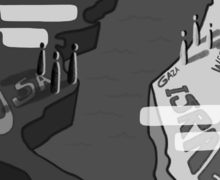With rise of social media in college classrooms, professors should ensure appropriate use
Though the importance of social media in today’s social and professional environments cannot be questioned, few educators have yet to find a way to use it effectively in the classroom. Educators should continue to work to find a better way to incorporate it into their lesson plans.
On Monday, USA Today College reported on an October survey by Pearson Learning Solutions and the Babson Survey Research Group. According to the survey of 8,000 college professors, 41 percent use social media as a teaching tool. In 2012, only 34 percent used social media as a teaching supplement. Social media in the classroom can be used in the form of blogs, wikis and podcasts in addition to common platforms like Facebook, Twitter and LinkedIn.
Although these mediums allow professors to connect with their students, the use of social media in the classroom is not as beneficial for students as professors may think.
Many professors require that students use social media as a learning supplement. For example, some courses require students to fill tweeting quotas or post weekly blogs as a graded assignment.
While education is evolving along with technology, as seen in the expansion of Massive Open Online Courses (MOOCs), traditional classroom methods cannot be left behind. Students cannot benefit from a 140-character tweet the same way they can with an analytical, in-depth discussion.
Today’s students have grown up with social media, so teaching their basics in the classroom is often repetitive.
Though students know how to use these platforms in a social sense, many may still not understand the intricacies of using social media professionally.
It would be appropriate for this topic to be discussed in some classes, but classrooms should not be the exclusive setting in which students are exposed to these mediums. Career centers should offer advice about how best to use platforms like Twitter and LinkedIn, which many view as geared toward professionals.
Technology is becoming a stronger force both socially and professionally. It is only fitting that it be expanded to education. However, in-person discussion cannot be substituted by fingers to a keyboard.
Published on November 6, 2013 at 2:16 am
Contact: opinion@dailyorange.com





